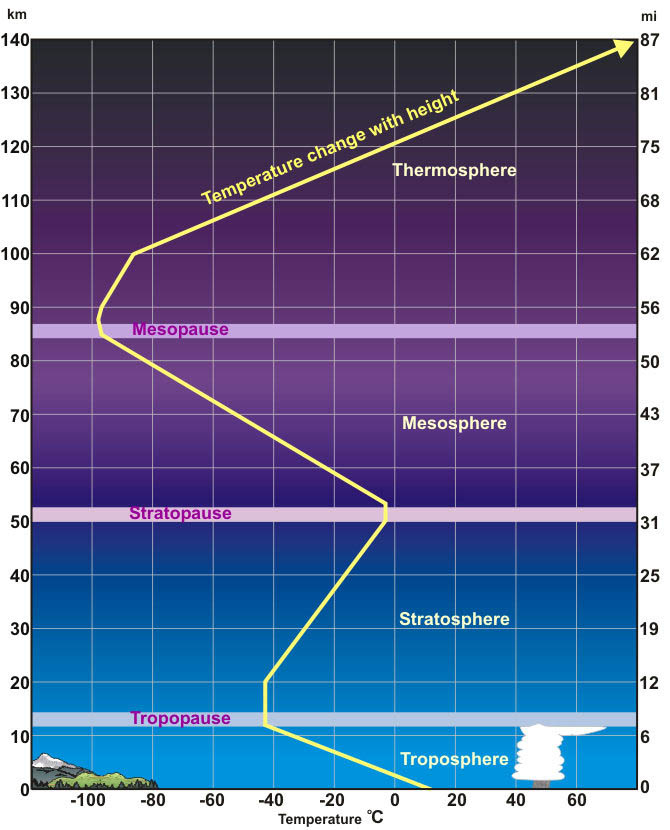Learn

Review
You have already learned about the different layers of atmosphere and how the air composition differs between the four layers —troposphere, stratosphere, mesosphere, and thermosphere. You have learned that ozone is primarily found in the stratosphere
layer between the troposphere and mesosphere
, and that the temperature in the stratosphere increases with altitude because the ozone absorbs UV radiation from the sun.
Remember that the troposphere is the layer of the atmosphere closest to the earth and that it has very little ozone present. The troposphere's temperature decreases as altitude decreases.
The mesosphere is the layer above the stratosphere and it is the coldest area because the radiation from the sun passes directly through it without being absorbed because no ozone molecules are present.
The thermosphere is the furthest layer from earth's crust and is the hottest because the sun increases the movement of oxygen molecules causing the temperature to increase.

Direct or Inverse?
Depending on what layer of the atmosphere that you are observing, the temperature and altitude can be directly proportional
temperature increases as altitude increases
or inversely proportional
temperature decreases as altitude increases
.

When you are looking at atmospheric pressure (regardless of the atmospheric layer), it is inversely proportional to altitude as altitude increases, atmospheric pressure decreases .
 |
 |